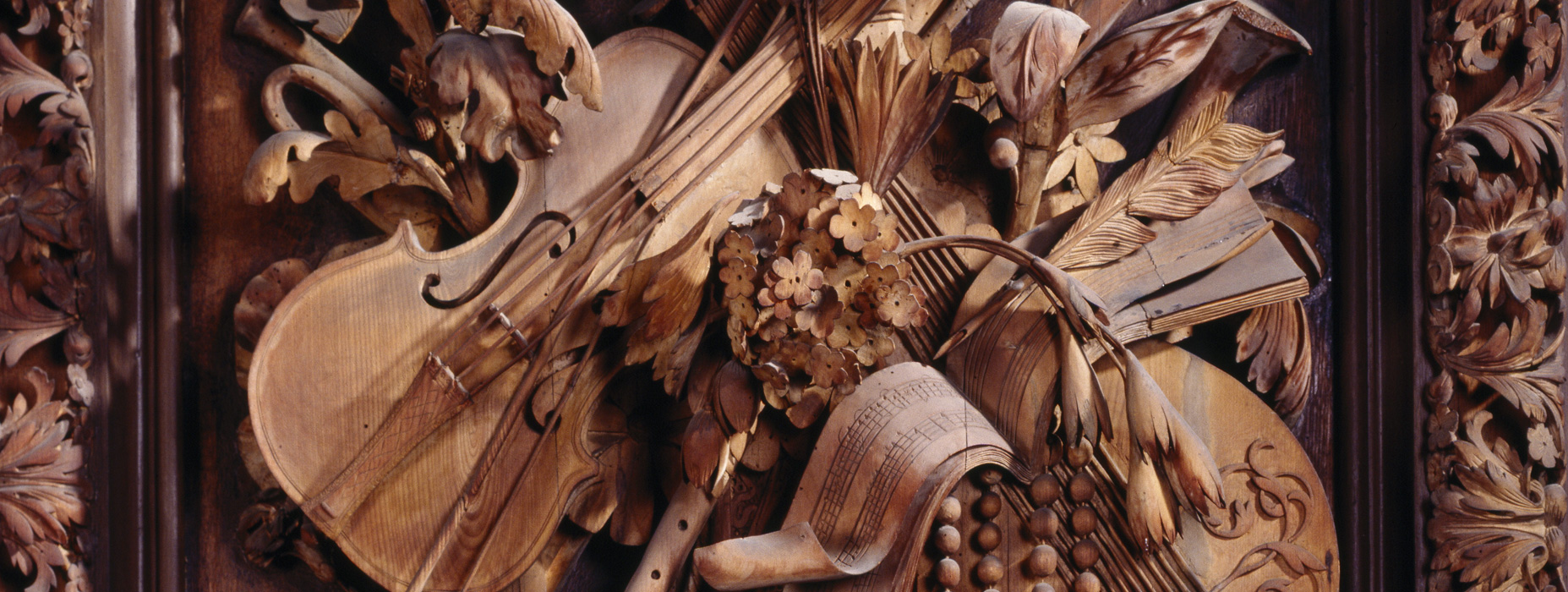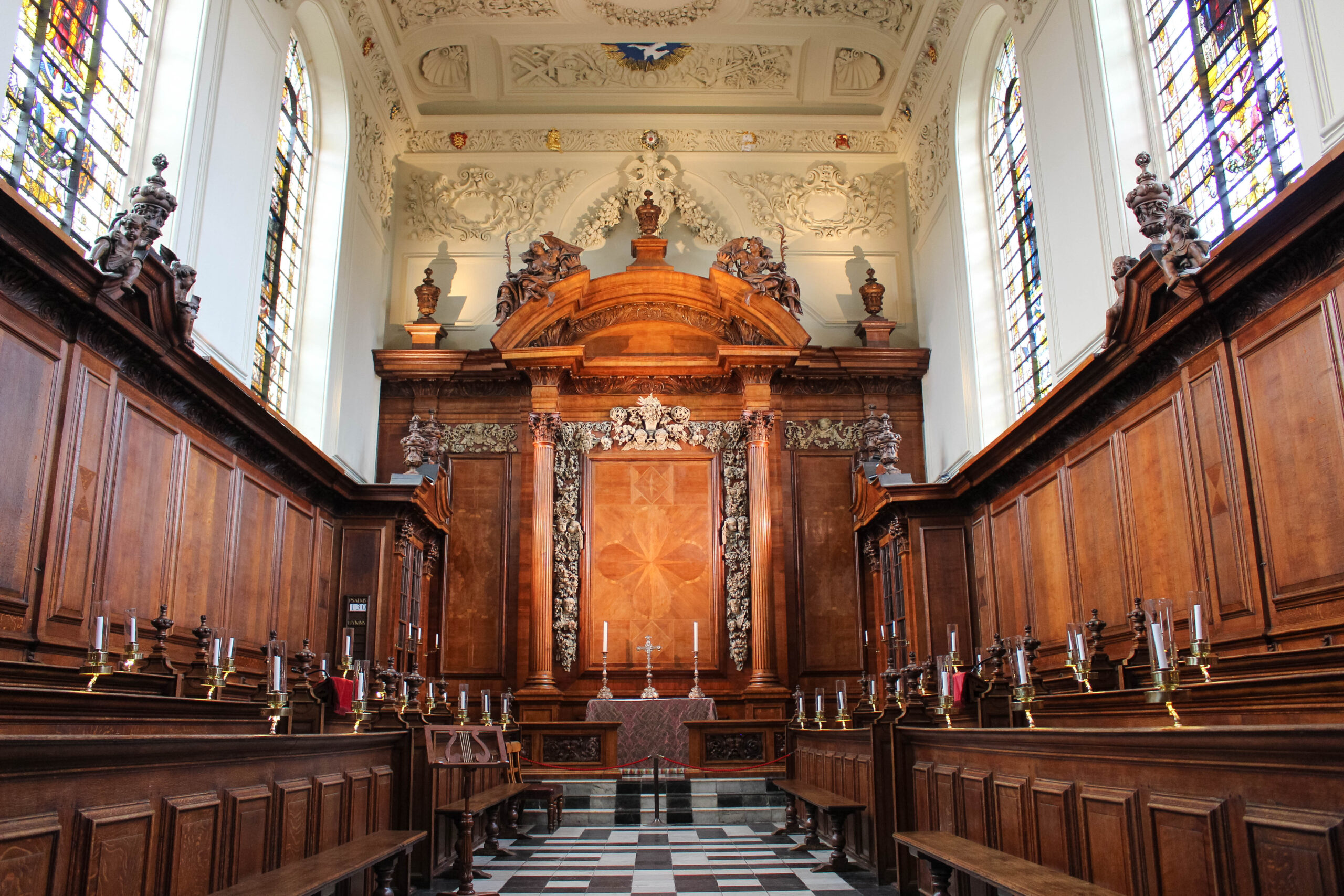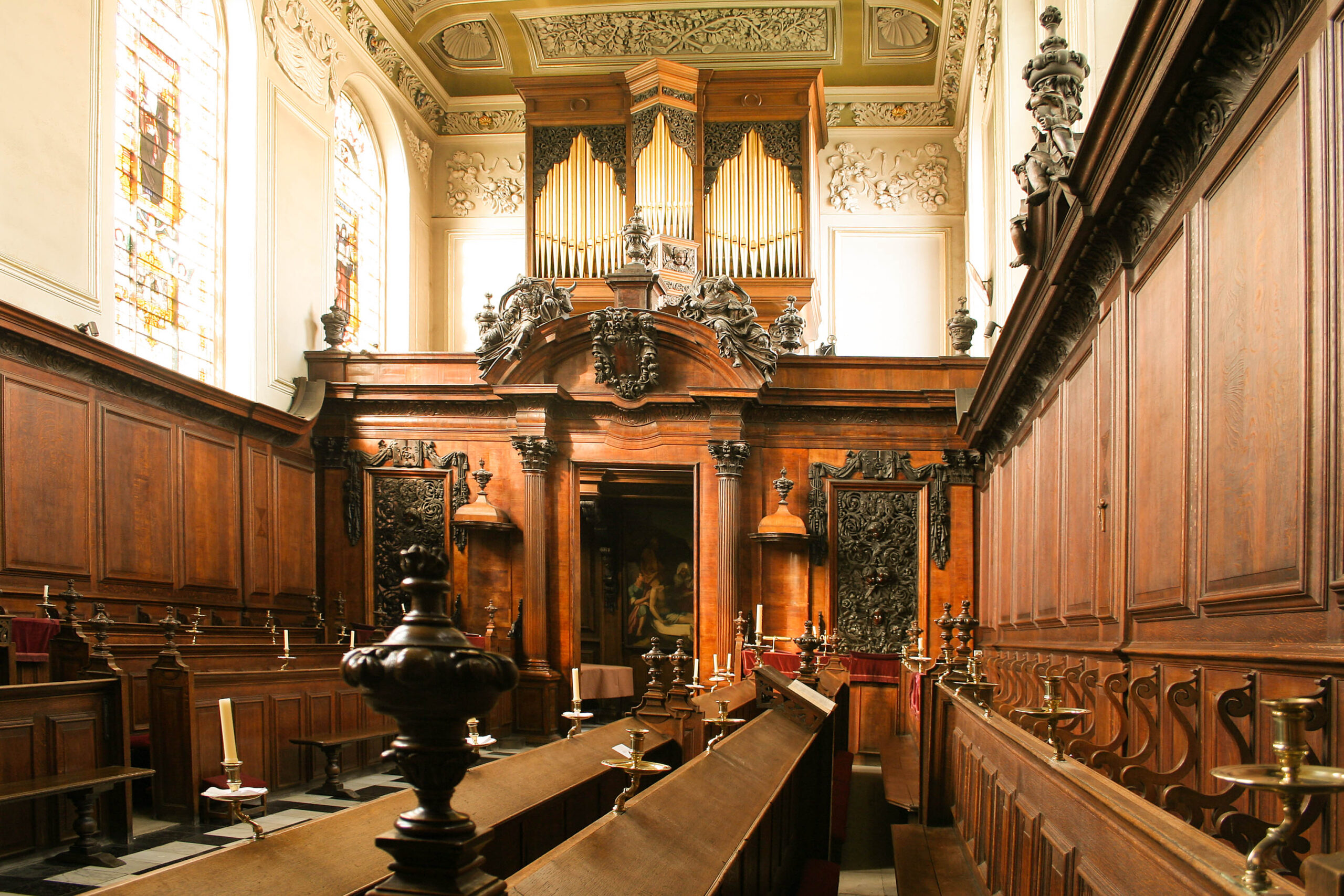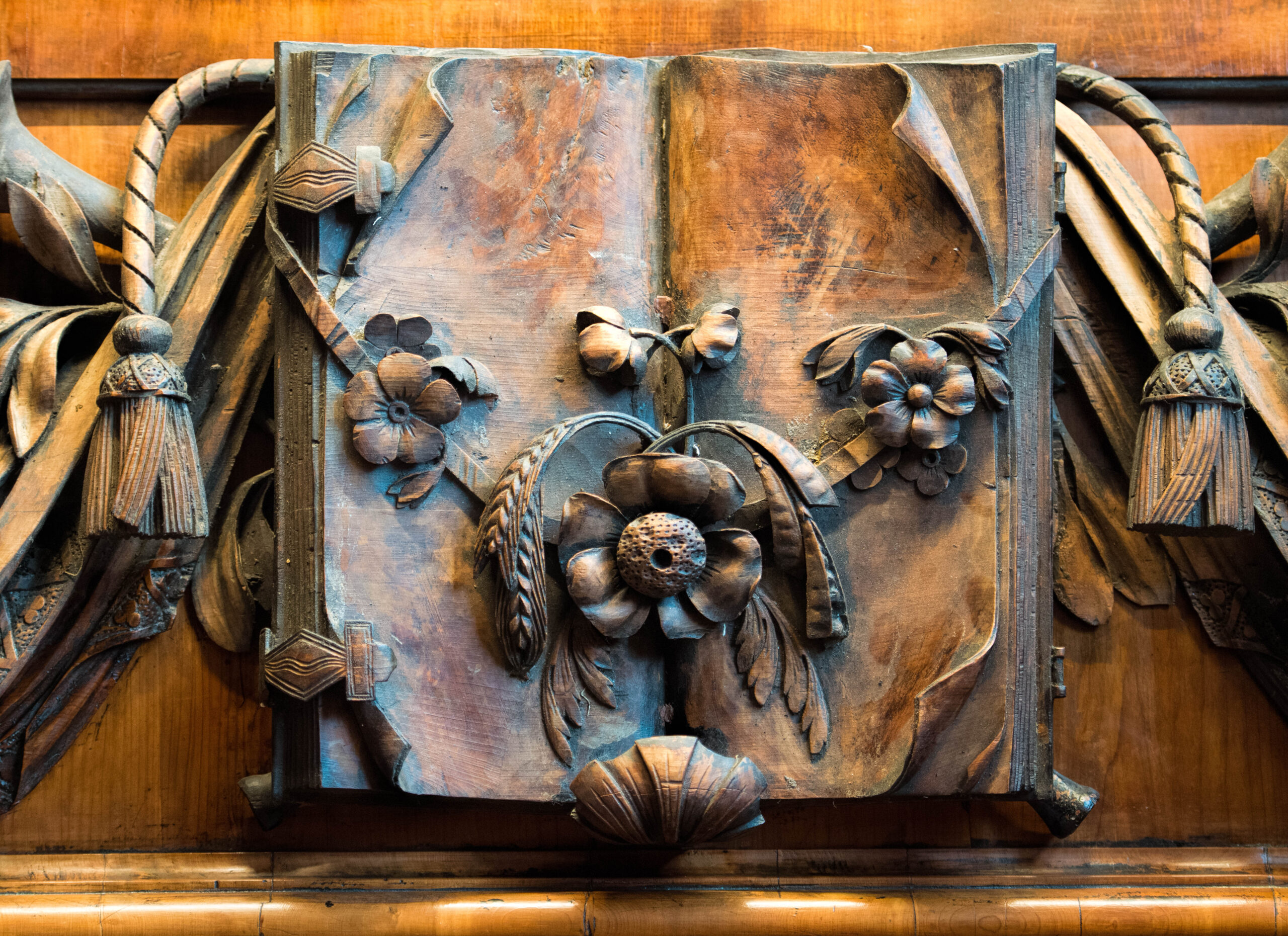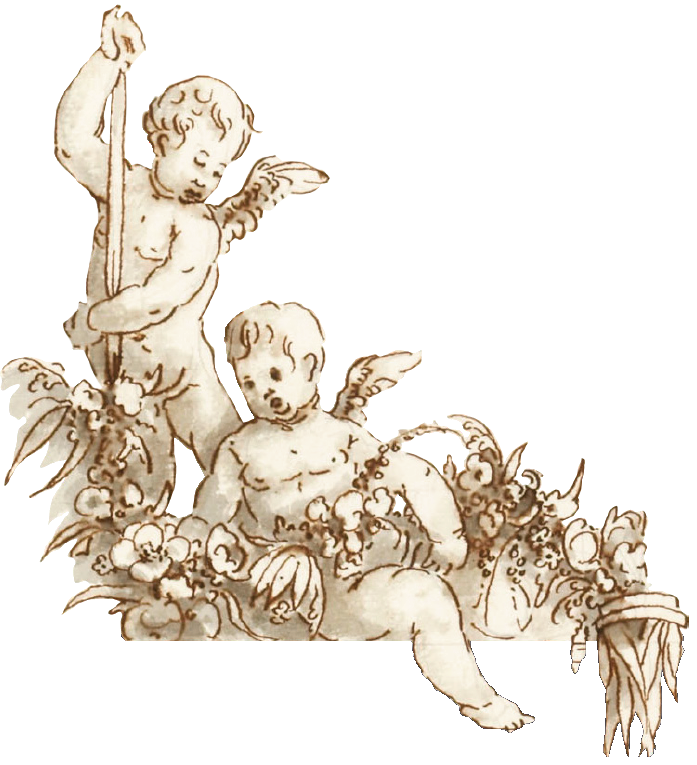Chapel Carved Decorative Scheme
Creator(s): Attributed to Grinling Gibbons
Date: 1694
Materials: Limewood and Juniper wood (Bermuda Cedar)
Location: Trinity College Chapel, Broad Street, Oxford, OX13BH
Credit Line (copyright notice for material) : By courtesy of Trinity College, Oxford
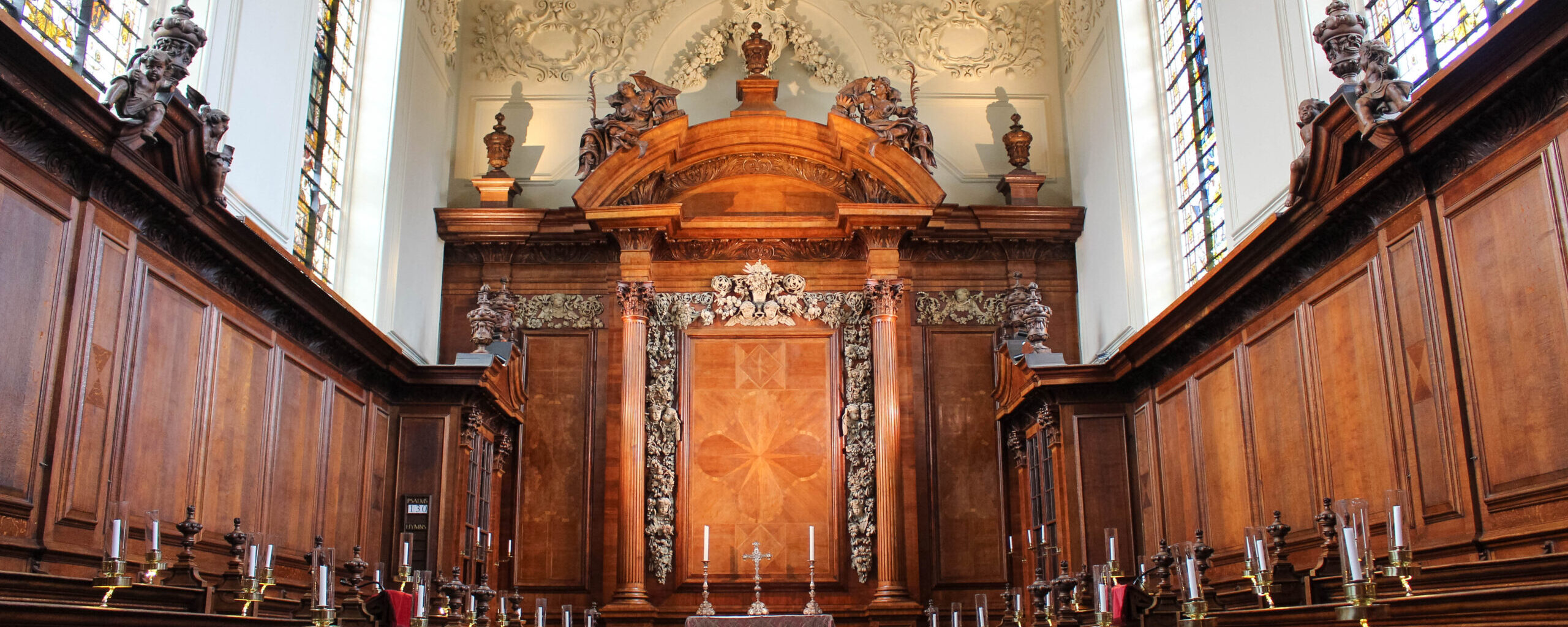
NOTES ON THE ARTWORK
The ascension and transfiguration of Christ is the theme of the interior of Trinity College Chapel. Commissioned by President Ralph Bathurst in 1694, Grinling Gibbons’ carvings are a major part of this scheme. The chapel’s sumptuous ceiling is decorated with exquisitely carved and moulded plasterwork, thought to be heavily influenced by Gibbons and hand modelled, possibly by Bradbury and Pettifer or Edward Goudge, ‘the beste master in England in his profession’. At its centre is a painting, ‘Christ in Glory’, by Pierre Berchet, about eight metres long and set between two smaller painted panels.
The complex carved scheme comprises screen, reredos, altar balustrade, four figures of Evangelists, four cherubs, two winged figures of Victory, as well as many smaller examples of relief carving. The figural carvings are all approximately life size. The wood mostly used for the carving is Juniperus Bermudiana. It’s common names are Juniper wood or Bermuda Cedar. It is known for its strength, lightness, colour and aroma. The carving on the reredos, however, is Limewood.
The whole of the woodwork cost £1140. John Evelyn (a former scholar of the College) was a subscriber to the chapel’s funding appeal raised by President Bathurst. Avery Tipping conjectures that Gibbons’ carvings may have been a part of his gift.
Although no receipts or record of provenance survive, the carving has been attributed to Grinling Gibbons on the grounds of the perfection of craftsmanship and the characteristic Gibbons motifs and styling.
The following authors have also made this attribution:
Celia Fiennes in her 1702 book ‘Through England on a Side Saddle in the Time of William and Mary’ describing it as: “a very fine carving of thin white wood just like that of Windsor it being of the same hand”.
President Blakiston in his book of 1898 ‘Trinity’.
Avery Tipping in ‘Grinling Gibbons and the Woodwork of his Age’ comments “…it is in the chapel of Trinity College alone that we certainly see Gibbons’ touch and see it at its best”.
Martin Kemp in ‘The Chapel of Trinity College Oxford’, stating there being nothing comparable to Gibbon’s technical characteristics in Britain at that time.
Arthur Oswald, wrote in Country Life, “no-one, on seeing the extraordinary virtuosity of the work, could possibly suspect any other authorship”.
David Esterly in his book ‘Grinling Gibbons and the Art of Carving’ wrote of the reredos “this is one of Gibbons’s most complex and subtly drawn compositions. …In its lucid simplicity and its use of large forms, this cresting is a quintessential piece of late Gibbons design.”
For more detail on the individual carved components see:
Trinity Chapel Reredos
Trinity Chapel Screen

